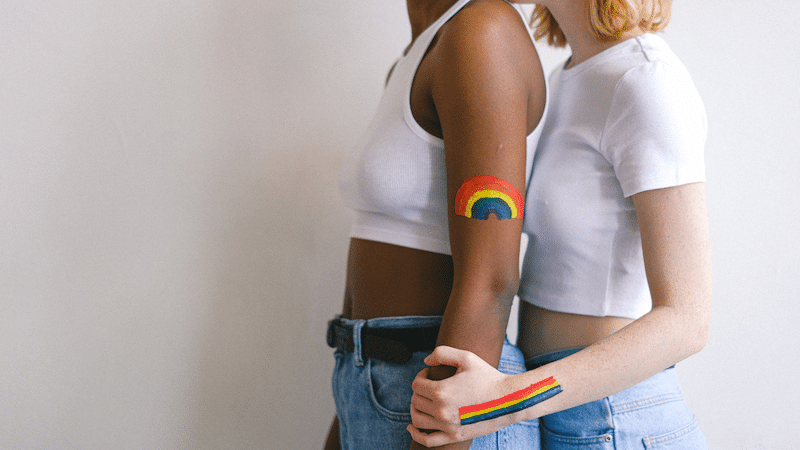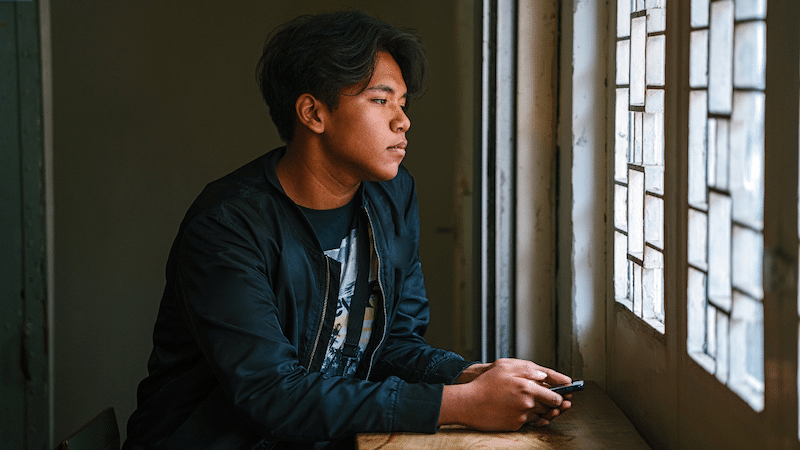Sexual Violence as a Form of Homophobia

Sexual violence is a human rights violation that can impact individuals across all gender identities, ages, and sexual orientations. When such violence is directed at individuals based on their sexual orientation, it becomes a tool of homophobia.1 Homophobia refers to an irrational fear, hatred, or prejudice against individuals who identify as or are perceived to be lesbian, gay, bisexual, transgender, queer, intersex, or asexual (LGBTQIA+). The intersection of sexual violence and homophobia creates unique challenges for LGBTQIA+ individuals, where sexual violence may serve as a means to control, punish, and exploit them based on their identities.2
Definitions and Historical Context of Rape
Historically, the definition of rape has shifted which impacts how sexual violence against is understood and reported. In 2008, the FBI changed its definition of rape to explicitly state it involved, “penetration, no matter how slight, of the vagina or anus with any body part or object, or oral penetration by a sex organ of another person.” This definition, while broadening the scope of what constitutes rape, still primarily addressed women’s experiences, leading to significant gaps in the acknowledgment of male victimization.3
Men and boys, as well as non-binary individuals, were often excluded from the societal understanding of rape within this framework. Such exclusions not only reflected a narrow view of victimization but also contributed to the stigma surrounding male survivors, perpetuating the misconception that men cannot be victims of sexual violence.4 This biased understanding is rooted in homophobic implications, as the definition inherently centers heterosexual experiences, failing to recognize the diverse sexual orientations and identities that exist.5
Cultural Influences on Homophobia and Sexual Violence
Cultural beliefs and societal norms play a significant role in shaping attitudes toward sexual violence and the LGBTQIA+ community. In many cultures, deeply ingrained homophobia influences how individuals view sexual violence against LGBTQIA+ individuals. This stigma can facilitate the perpetration of violence aimed at reinforcing heteronormative expectations.6 Such violence often draws upon traditional beliefs, approving harm as a justified means of “correcting” perceived deviance from societal norms.
Psychological and Physical Impact
The psychological and physical impacts of sexual violence on LGBTQIA+ individuals can be profound and multifaceted. Victims may experience depression, anxiety, post-traumatic stress disorder (PTSD), and other mental health issues as a direct consequence of their experiences.7 Fear of further violence and social ostracization can lead to social isolation, making it challenging for victims to access the support services they need. The stigma surrounding victimization (especially for men) can exacerbate these feelings of isolation, leading many to suffer in silence.
Underreporting and Lack of Support
Fear of stigma, discrimination, and victim-blaming often leads LGBTQIA+ individuals to refrain from reporting incidents of sexual violence. Many do not trust law enforcement or judicial systems to respond sensitively and fairly, resulting in a significant underreporting of instances of sexual violence. This silence reinforces the stigma but also allows perpetrators to evade accountability for their actions.1
How Does Sexual Violence as Homophobia Manifest?
Corrective Rape
“Corrective rape” represents a particularly egregious form of sexual violence where perpetrators aim to “cure” individuals of their sexual orientation through assault. Victims of corrective rape often face severe physical injuries and long-lasting psychological trauma, reinforcing harmful societal beliefs about LGBTQIA+ identities.8
Violence in Detention Facilities
LGBTQIA+ individuals within detention facilities, such as prisons and immigration centers, frequently face heightened risks of sexual violence. Reports indicate that inmates and even staff members target LGBTQIA+ detainees, often with little accountability, perpetuating a cycle of abuse that is largely overlooked.9
Hate Crimes
Sexual violence can be a weapon used in hate crimes against LGBTQIA+ individuals. Such attacks are not merely random acts of violence; they are designed to terrorize, intimidate, and reinforce societal stigma against the broader LGBTQIA+ community.10
Intimate Partner Violence (IPV)
Intimate partner relationships within the LGBTQIA+ community can also involve sexual violence, compounded by societal pressures and discrimination. Internalized homophobia where individuals hold negative beliefs about their identities can contribute to IPV, complicating the cycle of abuse and recovery.5
Addressing Sexual Violence as Homophobia
To effectively combat sexual violence as a manifestation of homophobia, several strategies can be implemented:
Legal Reforms
Governments must enact and enforce specific laws addressing sexual violence against LGBTQIA+ individuals. These laws should clearly define various forms of sexual violence, including those that disproportionately affect LGBTQIA+ populations, and ensure that perpetrators face severe repercussions.
Education and Awareness
Comprehensive educational initiatives are essential for combating homophobia and increasing awareness of sexual violence. Programs targeting schools, workplaces, and communities can promote understanding and acceptance of LGBTQIA+ identities. Training for law enforcement and healthcare providers can also enhance their response to LGBTQIA+ victims.
Support Services
Accessible, inclusive support services for LGBTQIA+ survivors of sexual violence must be established. These services should encompass medical care, psychological counseling, legal assistance, and safe housing options to meet the unique needs of LGBTQIA+ individuals.
Community Involvement
Activists, community leaders, and allies should collaborate to create supportive environments for LGBTQIA+ individuals. Public awareness campaigns can work to undermine homophobic attitudes and promote acceptance, fostering a culture of inclusivity.
By understanding and addressing the intersection of sexual violence and homophobia, society can better tackle the unique challenges faced by LGBTQIA+ individuals. Through legal reform, education, support, and community engagement, we can move toward a safer, more inclusive society that recognizes and addresses the dignity, safety, and well-being of all individuals, regardless of sexual orientation.
Sources
- Jones, S., & Patel, T. (2023). Inaccessible and stigmatizing: LGBTQ+ youth perspectives of services and sexual violence. Journal of LGBT Youth, 20(3), 632-657. https://doi.org/10.1080/19361653.2022.2134253
- Hindes, S., & Fileborn, B. (2021). Reporting on sexual violence ‘inside the closet’: Masculinity, homosexuality and #MeToo. Crime, media, culture, 17(2), 163-184. https://doi.org/10.1177/1741659020909872
- Worthen, M. G. (2021). Rape and sexual assault. In Sexual Deviance and Society (pp. 373-433). Routledge.
- Hoskin, R.A. “Femininity? It’s the Aesthetic of Subordination”: Examining Femmephobia, the Gender Binary, and Experiences of Oppression Among Sexual and Gender Minorities. Arch Sex Behav 49, 2319–2339 (2020). https://doi.org/10.1007/s10508-020-01641-x
- Colliver, B., & Jamel, J. (2023). Internalized homophobia or externalized transphobia: Violence against trans women in a sexual or romantic context. In Toxic Masculinity (pp. 110-128). Routledge.
- Valido, A., Rivas-Koehl, M., Espelage, D.L. et al. Protective Factors of Homophobic Name-Calling and Sexual Violence Perpetration and Victimization Among LGB, Trans, and Heterosexual High School Students. School Mental Health 13, 602–615 (2021). https://doi.org/10.1007/s12310-021-09453-7
- Klein, L. B., Dawes, H. C., James, G., Hall, W. J., Rizo, C. F., Potter, S. J., Martin, S. L., & Macy, R. J. (2023). Sexual and Relationship Violence Among LGBTQ+ College Students: A Scoping Review. Trauma, Violence, & Abuse, 24(4), 2196-2209. https://doi.org/10.1177/15248380221089981
- S.M. Rodriguez; Queers against Corrective Development: LGBTSTGNC Anti-violence Organizing in Gentrifying Times. GLQ 1 April 2022; 28 (2): 165–184. doi: https://doi.org/10.1215/10642684-9608105
- Domínguez, D. G., Hernandez-Arriaga, B., Noriega, M. A., García, D., & Martínez, D. A. (2022). “They treat us like we are not human”: Asylum seekers and “la migra’s” violence. Psychology of Violence, 12(4), 241–251. https://doi.org/10.1037/vio0000434
- Geldenhuys, K. (2021). Hate crimes against the LGBTQIA+ community. Servamus Community-based Safety and Security Magazine, 114(7), 30-34. https://hdl.handle.net/10520/ejc-servamus-v114-n7-a9



